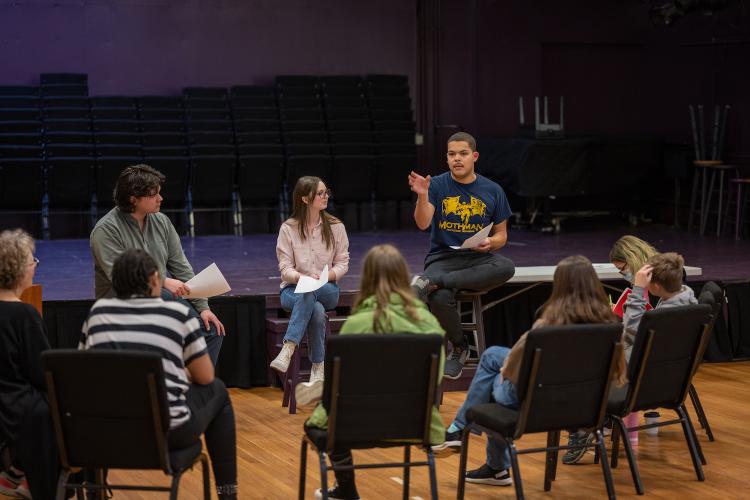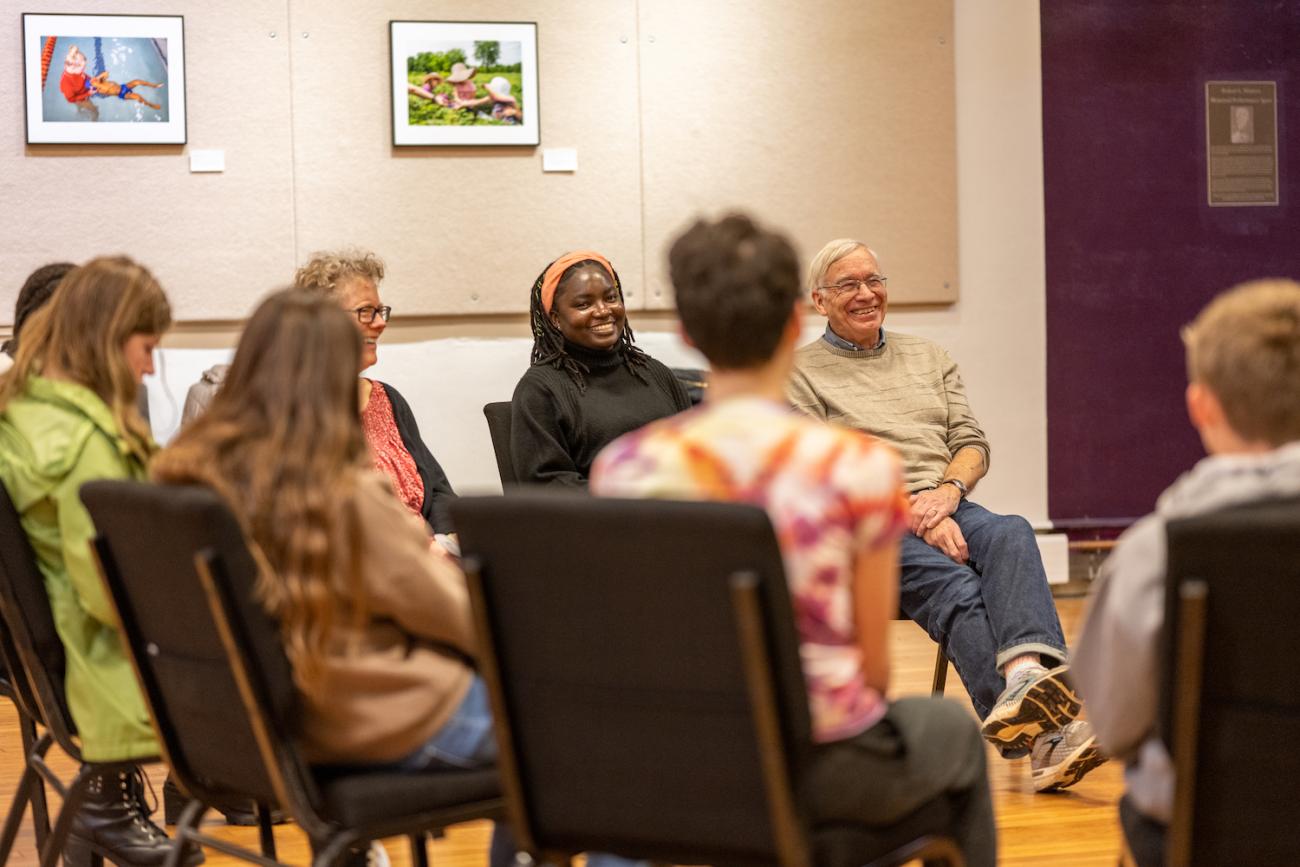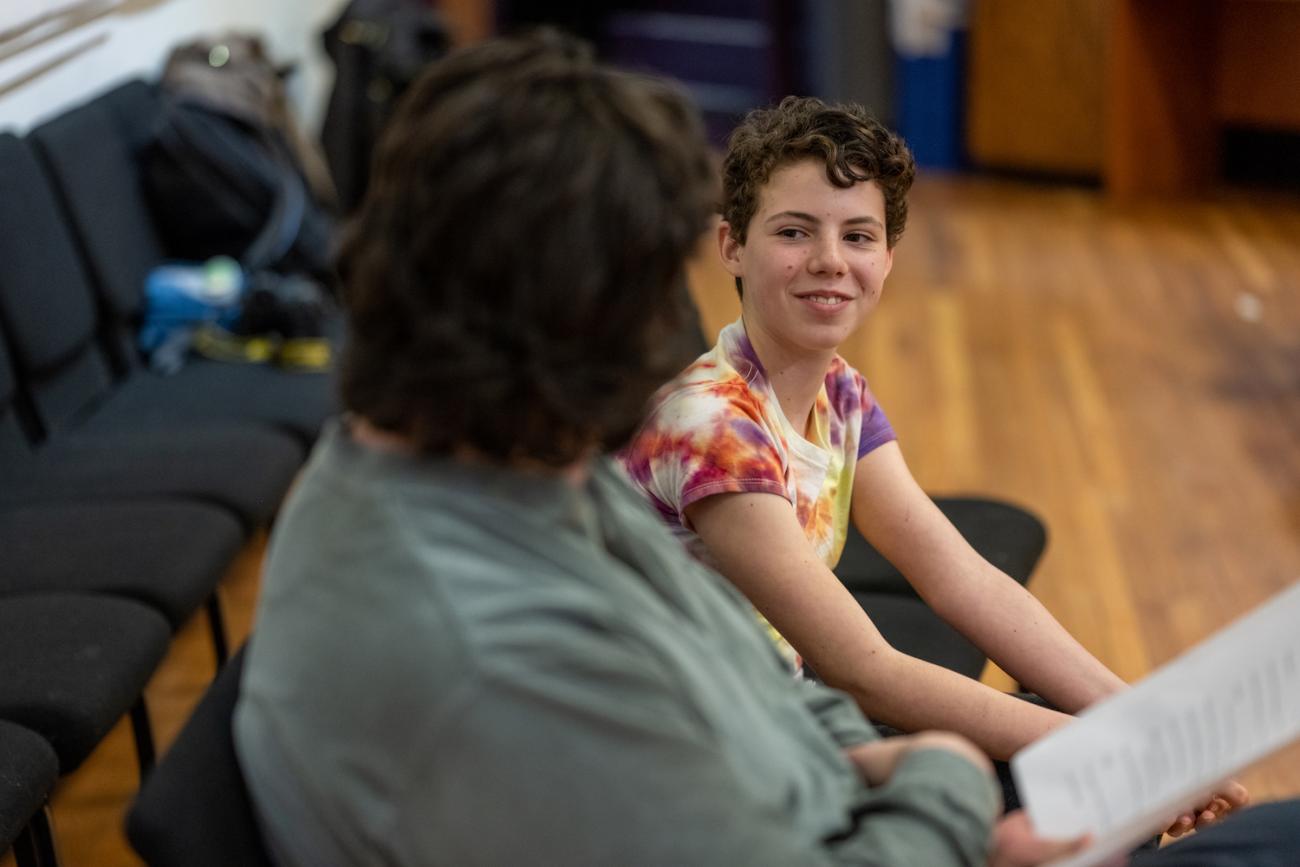
Campus and local community join together in anti-racism workshop

On a bright February day on the west side of Athens, college-aged students and middle schoolers came together at the Arts/WEST community center. Though the students are members of different age groups, they discussed prevalent issues that affect those of any generation.
The “Creating Your Anti-Racism Toolkit for Middle Schoolers” workshop was devised to give Athens Middle School students tips on how to respond in instances of bias. As a result of three years of successful workshops in the Athens High School, community members believe that students will benefit from being introduced to this education at an earlier age. The workshop was a joint venture between Tantrum Education, the Ohio University School of Theater (SOT)(opens in a new window), Athens Area Mediation and local activists.
When asked why it is important to start anti-racism education at a young age, local activist Rachel Siegel responded: “Because racism is happening at every age.”
The workshop took place for the first time in two sessions, on Jan. 25 and Feb. 8, at Arts/WEST.
Students of the Ohio University School of Theater joined the workshop to provide role-playing help, along with supportive listening and advice for their middle school counterparts. As the theater students role portrayed various scenarios, the group had the chance to explore different outcomes for handling bias.
“This is a safe space,” OHIO School of Theater Director Merri Biechler said. “But stepping up and participating makes it a brave space.”
The open atmosphere provided for conducive conversation about how to handle uncomfortable situations.
“This is a constant learning process,” OHIO senior Austin Vega said. “The worst thing you can do is be afraid to grow.”
The workshop discussed what it means to be a bystander, someone that witnesses something happening, such as an instance of implicit bias. There are many ways to intervene as a bystander to diffuse a situation.
Students were provided educational handouts, one of which detailed the “5 Ds of Bystander Intervention:” direct, distract, delegate, delay and document. Participants discussed scenarios in which each intervention tactic could be useful, and how to determine which technique works best. It is important for those at a young age to know when it may or may not be safe to intervene in a situation.
The event was facilitated by Biechler along with local activists John Schmieding and Rachel Siegel.
Biechler noted the many benefits of having actors in the room. Not only to improvise scenarios and different responses, but to bridge the gap with the younger students and provide a sense of understanding for things they may be experiencing.
Toward the end of the session, the college-aged and middle school students had the chance to break off into partners and role play interactions. Smiles and laughter filled the room as they were able to connect one-on-one.
“I hope to empower the middle schoolers to have more agency. So that it’s not always about us coming in and teaching them, but them helping each other,” Biechler said.


